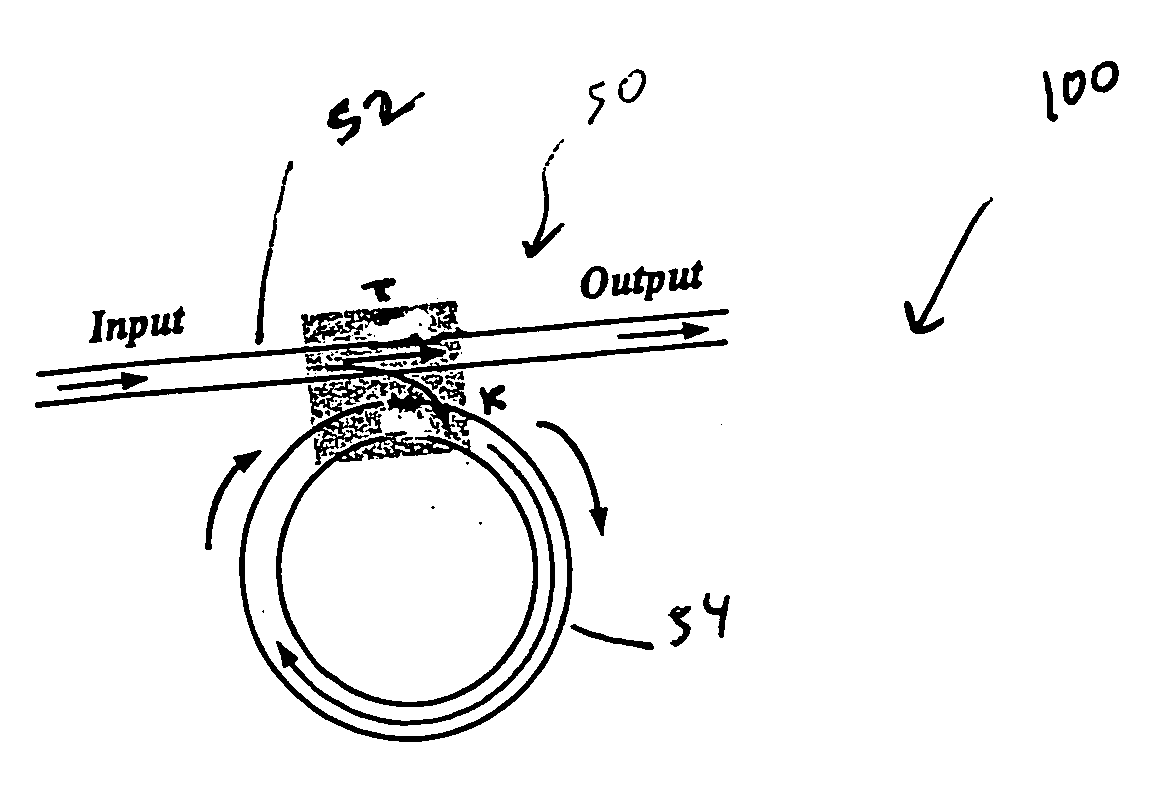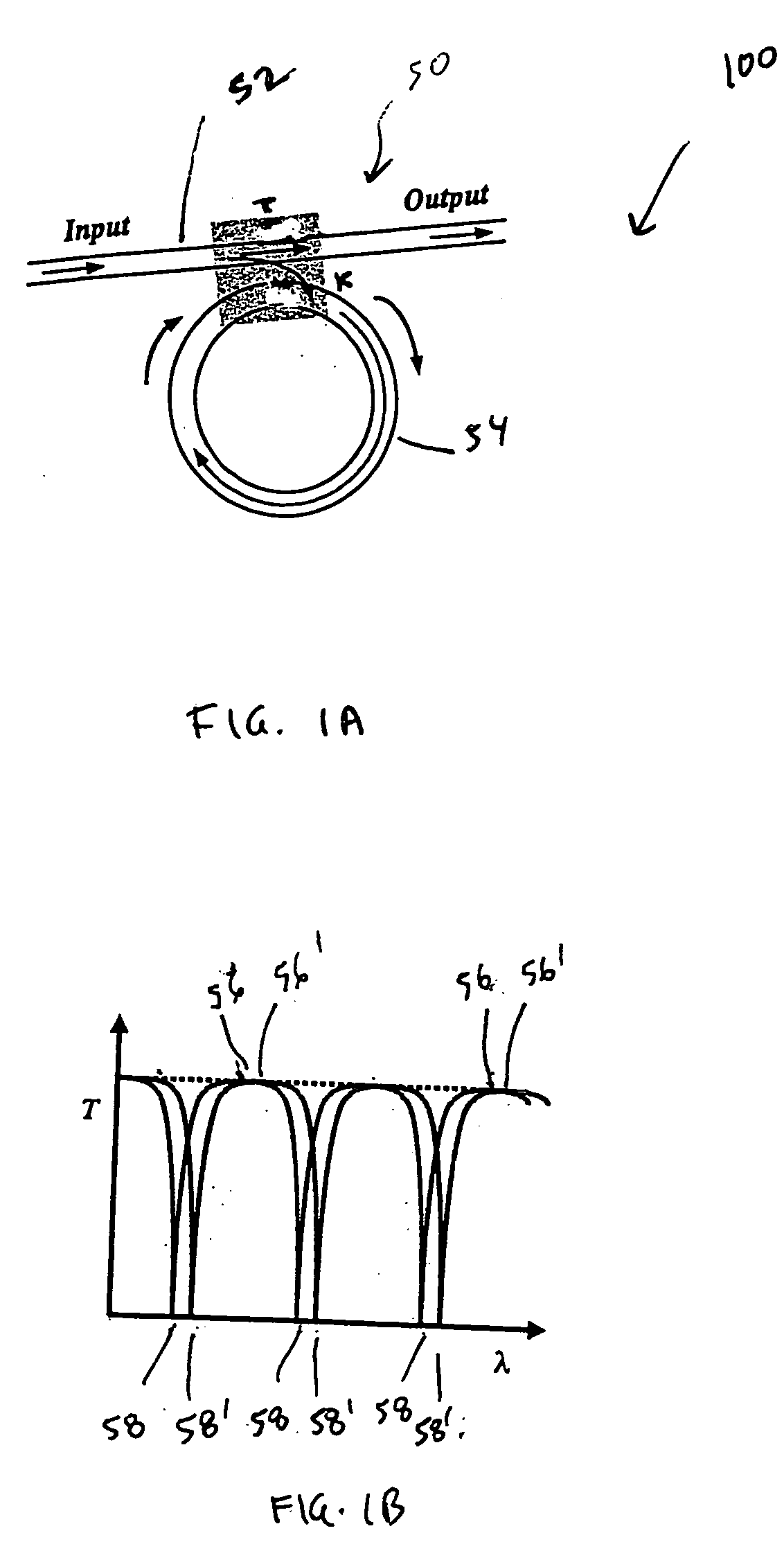Biochemical sensors with micro-resonators
a biochemical sensor and micro-resonator technology, applied in the field of sensors, can solve the problems of insufficient detection accuracy of sensors, inability to detect molecules present, and inability to form large arrays of microsphere-based biochemical sensors
- Summary
- Abstract
- Description
- Claims
- Application Information
AI Technical Summary
Benefits of technology
Problems solved by technology
Method used
Image
Examples
Embodiment Construction
[0029] The following description of various embodiments is merely exemplary in nature and is in no way intended to limit the invention, its application, or uses. For example, although the present teachings are illustrated using microring resonators, the present teachings are also applicable to other microcavity resonators, such as microdisk and microsphere resonators.
[0030] Referring to FIG. 1A, an exemplary biochemical sensor 100 according to the present teachings includes a microcavity resonator 50. The microcavity resonator 50 includes a sensing element in the form of a closed loop waveguide 54, such as a microring waveguide. The microcavity resonator 50 also includes a substantially straight bus waveguide 52, which serves as an input / output. In FIG. 1A, T is the transmission coefficient of the bus waveguide 52, and κ is the coupling coefficient. Although a circular ring is illustrated for the ring waveguide 54, any annular ring or other closed loop shape can be used. Light is i...
PUM
| Property | Measurement | Unit |
|---|---|---|
| refractive index | aaaaa | aaaaa |
| temperature | aaaaa | aaaaa |
| pressure | aaaaa | aaaaa |
Abstract
Description
Claims
Application Information
 Login to View More
Login to View More - R&D
- Intellectual Property
- Life Sciences
- Materials
- Tech Scout
- Unparalleled Data Quality
- Higher Quality Content
- 60% Fewer Hallucinations
Browse by: Latest US Patents, China's latest patents, Technical Efficacy Thesaurus, Application Domain, Technology Topic, Popular Technical Reports.
© 2025 PatSnap. All rights reserved.Legal|Privacy policy|Modern Slavery Act Transparency Statement|Sitemap|About US| Contact US: help@patsnap.com



